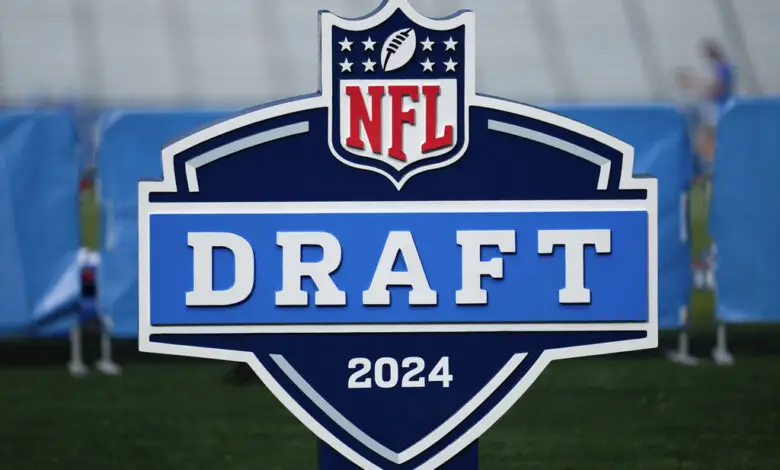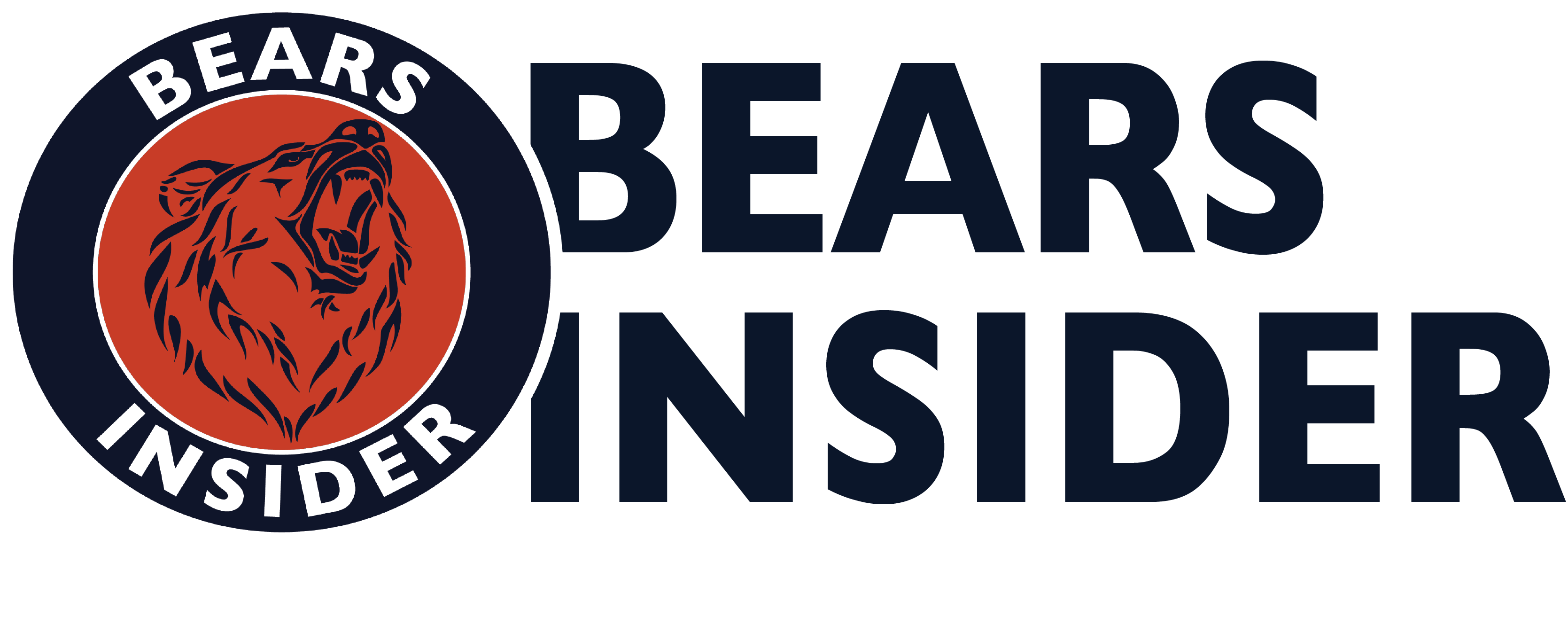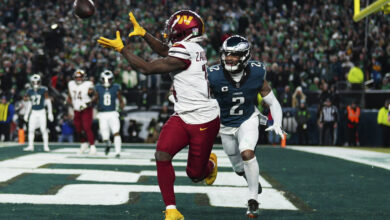
Draft Grades for All NFC North Teams
The 2024 draft is complete and for Bears fans, it was historic. Chicago finished the 2023 season 7-10, rebuilt their offense, traded Justin Fields, and moved closer to competing for an NFC North title. They’re chasing the Packers, who last season made the playoffs as a Wild Card entry, and the Lions, who lost the NFC Championship Game 34-31 to the 49ers. Let’s take a look at how each team fared in this year’s draft.
Lions (12-5)
- R1P24 – CB Terrion Arnold (Alabama) – The Lions improved pass rush will put Arnold’s development on the fast track. He also gives Detroit another versatile defensive back from Alabama, joining Brian Branch.
- R2P29 – CB Ennis Rakestraw Jr. (Missouri) – The Lions beefed up their secondary to combat division opponents that added two first-round quarterbacks and one first-round wide receiver. Rakestraw is a bit undersized and doesn’t have great speed but he’s instinctive and plays with a high motor.
- R4P26 – OT Giovanni Manu (British Columbia) – Manu is a 6-foot-7, 352-pounder with 34 5/8-inch arms, 10 1/2-inch hands, and an 83-inch wingspan. He also ran a 5.06 40 with a 33 1/2-inch vertical leap. He’s not NFL-ready, but he’s a powerful run-blocker who takes up a lot of space as a pass-blocker. Manu was ranked No. 282 overall by ESPN and No. 27 at his position, so he is potentially a huge reach.
- R4P32 – RB Sione Vake (Utah) – Vake was a two-way player at Utah, but was used primarily at safety. However, the Lions sent his card with a running back designation. He played just two years of ball after a three-year mission for the Church of Latter-Day Saints. Vake is another reach pick by Detroit.
- R6P13 – DT Mekhi Wingo (LSU) – The Lions got great value by selecting Wingo, who was a top-100 player on most boards and the 10th-ranked defensive tackle. He’s powerful and agile, but somewhat short-armed and squatty. He has NFL starting potential as a three-technique in a four-man front.
- R6P34 – OG Christian Mahogany (Boston College) – Mahogany is a powerful run-blocker with the frame to wall off defenders and strength to move defenders off the ball. He gets excellent push on combo blocks and also has the range to reach second-level assignments.
The Lions entered the draft with seven picks and after four trades took a total of six players. Detroit’s needs ahead of the weekend were cornerback, edge, safety, wide receiver, and offensive tackle. They grabbed one of the consensus best corners available in Arnold, and Wingo and Mahogany were top-100 picks on most boards. That said, they reached a little in the fourth round by selecting Manu and Vake, who may have been available as undrafted free agents.
- Best Pick: Arnold
- Best Value: Mahogany
- Overall Grade: B-
Packers (9-8)
- R1P25 – OT Jordan Morgan (Arizona) – The addition of Morgan dropped a lot of jaws in America’s Dairyland. Yes, the Lions leapfrogged the Packers to take Arnold, but GM Brian Gutekunst seemed ill-prepared to have a backup selection ready. He might have been better off trading down because Morgan’s medicals are iffy and he’s a guard who is projected to play tackle. Tyler Guyton is a better tackle, so Gutekunst completely whiffed on this selection.
- R2P13 – LB Edgerrin Cooper (Texas A&M) – The Packers are thin at inside linebacker, so Cooper fills a need. Why? Green Bay released De’Vondre Campbell, and 2022 first-round pick Quay Walker has been average. Cooper is the best inside linebacker in the draft and grades out as a Day 1 starter, so this is a nice recovery by the team’s front office.
- R2P26 – S Javon Bullard (Georgia) – Speaking of nice recoveries, the Packers may have found the heist of the draft by selecting Bullard. The Georgia standout is a versatile safety with outstanding closing burst who takes good angles, undercutting receiver routes. He doesn’t have ideal size or length, but he is ultra-instinctive and makes his presence felt at all three levels of the field. Bullard will serve as a hybrid nickel who plays well against the run and can disguise his intentions while dropping back in pass coverage.
- R3P25 – RB MarShawn Lloyd (USC) – Lloyd is an explosive back but Green Bay already has veterans Josh Jacobs and AJ Dillon. He’s also too good to place on the practice squad because the Packers will lose him. He’ll serve on special teams until next year, eventually replacing Dillon, who is in the final year of his contract. Lloyd’s a great pick, but running backs are a dime-a-dozen, so the Packers are essentially giving away his first year. He’s been called “a bowling ball with wheels,” which will endear him to Packers fans.
- R3P28 – LB Ty’Ron Hopper (Missouri) – Hopper needs to be more consistent at the point of attack and as a finisher, but he is a fast-flowing athlete with the pursuit skills and blitzing talent to find a home in the NFL. Still, he ranked No. 191 overall and 13th at his position. I know Green Bay is thin at inside linebacker, but Hopper is a reach pick.
- R4P11 – S Evan Williams (Oregon) – Williams was ranked higher overall than Hopper, so you could say he is a value pick. He still was selected a little higher than most analysts predicted.
- R5P28 – C Jacob Monk (Duke) – Gutekunst gets some redemption and an A+ for this pick. Monk is a versatile, five-year starter who was under-ranked by just about everybody. He doesn’t have elite size and strength, which puts more of a premium on his technique, but his foot quickness and football IQ belong on an NFL roster. The Duke star is considered a backup, but his ability to play multiple positions will get him plenty of snaps.
- R5P34 – S Kitan Oladapo (Oregon State) – Do you think Green Bay fears the division’s beefed-up passing attack? The Packers have plenty of depth with Xavier McKinney, Zayne Anderson, and Benny Sapp III, plus Bullard and Williams. Oladapo won’t make the team.
- R6P26 – OT Travis Glover (Georgia State) – Gutekunst loves his five-year starters, and Glover is a big-bodied blocker with explosive thrust. He’s also a little slow, appears heavy in space, and sometimes seems lost on the field. Glover is a project though, and rightly so given the weak bottom half of this draft class.
- R7P25 – QB Michael Pratt (Tulane) – Pratt is third on Green Bay’s depth chart behind Jordan Love and Sean Clifford. He’ll be a scout team QB with a reservation on the team’s practice squad. The world needs clipboard holders, too.
- R7P35 – CB Kalen King (Penn State) – King is a smaller but competitive press corner who is tough and physical matching up against bigger receivers on the outside. He had 16 pass breakups over the past two seasons. King can also pluck the ball out of the air or rip it out before receivers can complete the catch and is a better selection than Oladapo.
The Packers have added 35 players in the last three drafts and filled some pressing needs this year, especially in the defensive backfield. Still, a lot of their picks are projects, so the jury will be out for 2-3 years. That’s the nature of the beast when you have 11 selections at your disposal. Green Bay simply doesn’t have 11 starter positions available and a lot of the rookies won’t make the team or will be added to the practice squad. That lowers their grade somewhat, but it’s also the fruits of having such a good, young core. And let’s face it, we all wanted Kool-Aid McKinstry to land with the Pack.
- Best Pick: Bullard
- Best Value: Monk
- Grade: C+
Vikings (7-10)
- R1P9 – QB J.J. McCarthy (Michigan) – The Vikings didn’t have to give away their No. 23 pick to jump up for McCarthy. That, therefore, set them up for one of the better first rounds in this draft. Some might see this pick as a reach, especially considering that the Vikings traded up from No. 11 to get him, but McCarthy was the ninth overall player on the board. He was the best available quarterback at the time, and the Vikings weren’t going to induce risk by staying put.
- R1P17 – Edge Dallas Turner (Alabama) – Minnesota jumped on Turner because they had the No. 23 pick as an asset to trade up again. Turner was the best edge rusher in this draft and provides good value considering he had a top-eight grade.
- R4P18 – CB Khyree Jackson (Oregon) – Jackson is still learning how to be disciplined and read routes, but his improvements in 2023 are encouraging. He is a competitive corner with the ability to disrupt air space thanks to his rare size. That said, Jackson is destined to be a special teams player as a rookie, at most.
- R6P1 – OT Walter Rouse (Oklahoma) – A lot of teams scouted Rouse only to discover J.C. Latham. Rouse has good size and tends to hold his ground when edge rushers try to go through him. He’s not a very efficient pass-blocker, however.
- R6P27 – PK Will Reichard (Alabama) – The Vikings chose not to re-sign longtime kicker Greg Joseph, so this pick was fait accompli. Reichard has the best leg in the draft. He also finished his collegiate career with school records for field goals, field goals of 50-plus yards, and point-after attempts. He’s the first PK drafted out of Alabama since 1966.
- R7P10 – C Michael Jurgens (Wake Forest) – Most evaluators view Jurgens as a backup, but he does have solid technique and ability as a pass protector.
- R7P12 – DT Levi Drake-Rodriguez (Texas A&M-Commerce) – This is certainly a scout’s pick. Drake-Rodriguez was ranked overall in the 375-425 range. Still, he’s a relentless pass-rusher who had 5.5 sacks and forced a fumble in 2023, albeit against inferior competition.
The Vikings had nine picks but gave away three in trades, most notably to acquire McCarthy and Turner. They needed a quarterback and an edge rusher and got two of the best. Choosing a PK in the fourth round seems out of the ordinary, but Reichard gives Minnesota a Day 1 starter with a Day 3 pick, something that will be rare once this draft is fully analyzed a few years from now.
- Best Pick: McCarthy
- Best Value: Turner
- Grade: A-
Bears (7-10)
- R1P1 – QB Caleb Williams (USC) – Williams is the new QB1 for a franchise starved for a star quarterback. The only other quarterbacks on the roster are second-year player Tyson Bagent and journeyman Brett Rypien. Williams is therefore a Day 1 starter.
- R1P9 – WR Rome Odunze (Washington) – The Bears have remade their offense since tanking in 2022, and by selecting Odunze at No. 9, Chicago has changed the trajectory of the organization for perhaps the next decade. With Odunze, Keenan Allen, D.J. Moore, Cole Kmet, and Gerald Everett working with Williams, the Bears have a potentially explosive offense. Chicago will have the NFC’s best offense if Willams and Odunze are as advertised.
- R3P11 – OT Kiran Amegadjie (Yale) – Amegadjie is a raw prospect with loud tools. He will need technical and strength work before he sees game reps, but his physical ingredients and competitive drive are the foundational elements that pro coaches want to develop. Amegadjie admitted a year ago he was destined to be a Bear. He’s now saying he intends to be the league’s best tackle once he fully develops. Time will tell. Amegadjie is also an outstanding individual who grew up worshipping the Bears.
- R4P22 – P Tory Taylor (Iowa) – Just call this kid ‘The Leg.’ Taylor set the dubious record of most punting yards in a season in 2023. That’s because Iowa had little in the way of offense. That record was 85 years old by the way. Taylor is the second punter Ryan Poles has drafted in three years. His selection means the end of the line for Trenton Gill. This is a better pick than you might think. It’s rare to find an immediate starter late in the 4th round. Also, field position matters, which makes Taylor a bona fide weapon. Devin Hester taught us the importance of winning the field position battle.
- R5P9 – Edge Austin Booker (Kansas) – The Bears traded back into the draft to select Booker. Poles sent a 2025 fourth-round selection to the Bills to reacquire the pick he sent Buffalo for Ryan Bates. Booker entered the draft as a junior, had a Round 3 grade, and might have been a first or second-round pick had he stayed at Kansas for one more year. In other words, Chicago got excellent value by selecting Booker, and he fills a need.
Chicago’s grade was in the B-to-B+ range until they traded for Booker. Williams and Odunze are excellent picks, but Amegadjie is a project at a position of need. Taylor has a booming leg, but the Bears need depth on both sides of the line. Booker helps there, but make no mistake, Taylor is a Day 1 starter. Amegadjie and Booker are scout picks, something Poles is committed to with each draft he leads. The dearth of picks hurts a last-place team. Don’t be surprised if Chicago rosters another UDFA this year to join Bagent and Jack Sanborn.
Poles has playoff aspirations, but may still be a year or two away. Green Bay and Detroit are just too tough. Everything hinges on Williams and Odunze, but the Bears will be fun to watch nonetheless.
- Best Pick: Williams
- Best Value: Booker
- Draft Grade: A

